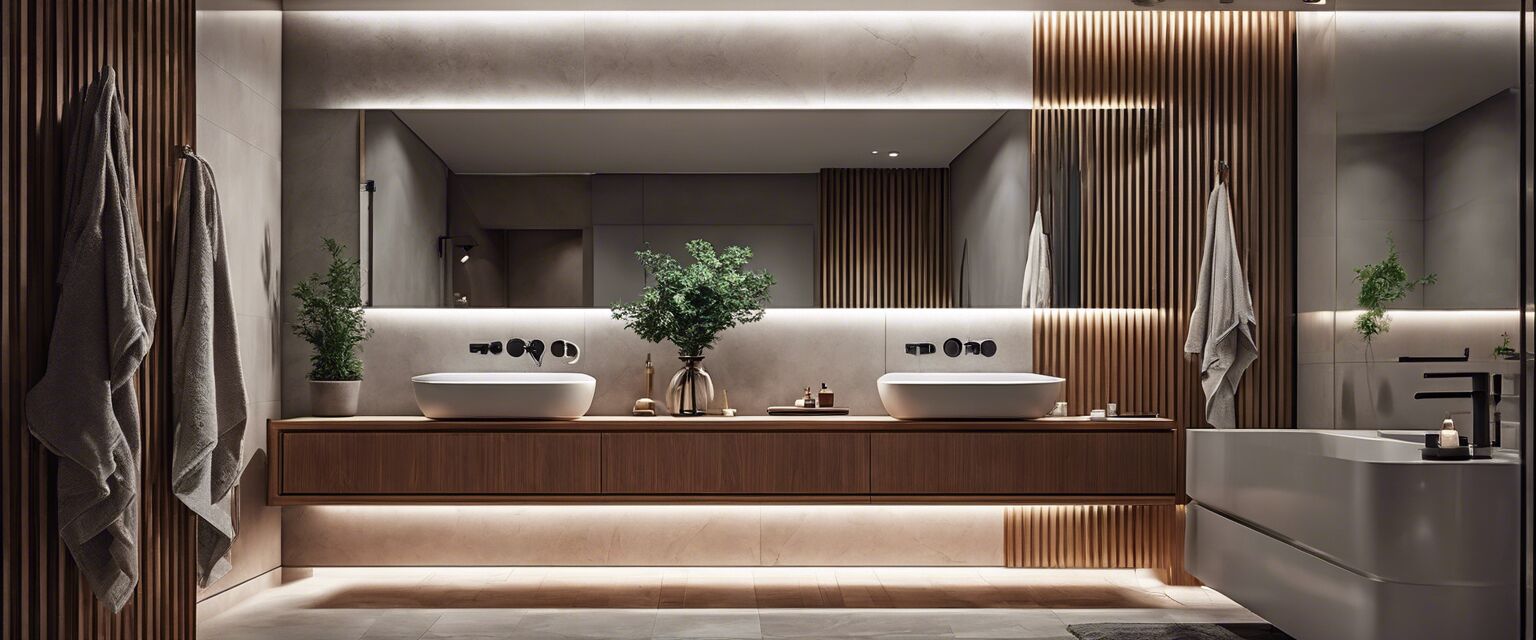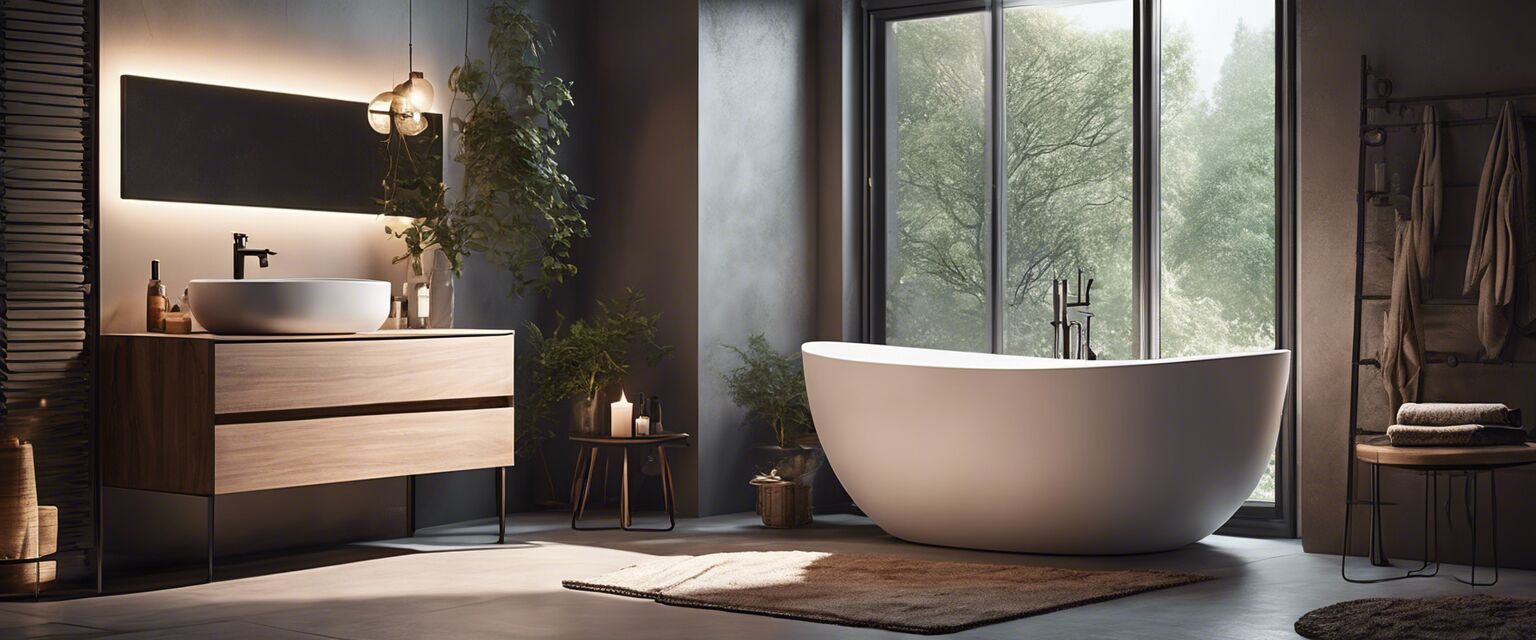
Recessed Bathroom Lighting
Key Takeaways
- Recessed lighting is a sleek and modern choice for bathrooms.
- It enhances functionality and aesthetics without occupying space.
- Choosing the right type and placement is crucial for optimal lighting.
- Consider dimmable options for adjustable ambiance.
- Be mindful of moisture-rated fixtures for safety.
Recessed lighting has become an increasingly popular choice for bathroom illumination. Its ability to blend seamlessly into the ceiling creates a modern and sophisticated look while providing effective lighting. In this article, we'll explore everything you need to know about recessed bathroom lighting, including the benefits, types, installation tips, and more.
What is recessed lighting?
Recessed lighting, often referred to as can lighting or pot lighting, is installed into a hollow opening in the ceiling. This method of lighting provides a clean and uncluttered appearance in any space, including bathrooms. Recessed lights are available in various styles, sizes, and types, making them a versatile option for different design preferences.
Benefits of recessed bathroom lighting
- Space-saving: Recessed lights do not take up any overhead space, making them ideal for smaller bathrooms.
- Versatility: They can be used as general lighting, task lighting, or accent lighting.
- Aesthetic appeal: Recessed lighting offers a modern look that can enhance the overall design of the bathroom.
- Adjustable ambiance: Dimmable recessed lights allow for customizable brightness levels.
Types of recessed lighting
When choosing recessed lighting for your bathroom, consider the following types:
| Type | Description | Best for |
|---|---|---|
| Standard Recessed Lights | Basic can lights that provide general illumination. | General bathroom lighting. |
| LED Recessed Lights | Energy-efficient lights with a long lifespan. | Energy-conscious homeowners. |
| Adjustable Recessed Lights | Lights that can be tilted to focus on specific areas. | Highlighting artwork or architectural features. |
| Shower-Safe Recessed Lights | Moisture-rated fixtures specifically designed for wet areas. | Bathrooms with showers or tubs. |
Installation tips for recessed lighting
Installing recessed lighting in your bathroom requires careful planning. Here are some tips to help you with the installation:
- Plan the layout: Determine the best placement for the lights to ensure even illumination throughout the space.
- Consider ceiling height: Ensure the lights are installed at an appropriate height for optimal lighting.
- Use moisture-rated fixtures: Ensure the fixtures are suitable for humid environments to prevent damage.
- Consult a professional: If you're unsure about the installation process, consider hiring a licensed electrician.
Choosing the right bulbs
The choice of bulbs can significantly affect the quality of light in your bathroom. Here are some options:
| Bulb Type | Features | Benefits |
|---|---|---|
| Incandescent | Warm light, easy to find. | Provides a cozy atmosphere. |
| LED | Energy-efficient, long-lasting. | Lower energy bills, less frequent replacements. |
| CFL | Compact and energy-saving. | Reduces energy consumption. |
Maintenance for recessed lighting
To keep your recessed lighting looking and functioning their best, consider the following maintenance tips:
- Regular cleaning: Dust and clean the fixtures regularly to maintain light quality.
- Check bulbs: Replace any burnt-out bulbs promptly to ensure consistent illumination.
- Inspect wiring: Periodically check the wiring for any signs of wear or damage.
Common mistakes to avoid
When installing recessed lighting, avoid these common pitfalls:
- Overcrowding: Avoid installing too many lights, which can create harsh lighting.
- Ignoring placement: Properly plan the layout to ensure even distribution of light.
- Using non-moisture-rated fixtures: Make sure to use appropriate fixtures in wet areas.
Conclusion
Recessed bathroom lighting is a stylish and functional choice that can elevate the design of your space while providing effective illumination. By considering the types, installation tips, and maintenance practices outlined in this article, you can create a well-lit and inviting bathroom environment.
Tips for beginners
- Start with a simple layout plan before purchasing lights.
- Choose LED bulbs for energy efficiency.
- Don't hesitate to consult a professional for installation if needed.
Pros
- Modern and unobtrusive design.
- Versatile for various lighting needs.
- Energy-efficient options available.
Cons
- Installation can be complex.
- Requires careful planning to avoid overcrowding.
- Moisture-rated fixtures can be more expensive.
Further reading
For more information on various lighting options, check out our other articles:








